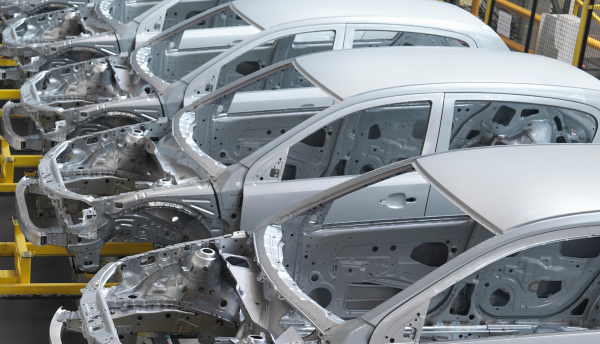
Volvo Cars has unveiled its new self-developed downsized engine range that will eventually be fitted in all its vehicles. According to a statement, the new engine family known as Drive-E will be based on a turbocharged four cylinder, 2.0-litre architecture and will be available in gasoline (petrol) and diesel fuel types when it is launched later this year. They will eventually replace eight engine architectures on three vehicle platforms, but will initially be fitted to its S60, V60 and XC60 models. Derek Crabb, vice-president of the automaker's Powertrain Engineering function said, "We have created smaller, more intelligent engines with power curves that give exciting driveability compared with engines with more cylinders yet deliver the fuel economy of only four cylinders. In addition, by adding electrification such as plug-in hybrid technology, we will reach power figures in the V8 territory."
|
|
|
Volvo Drive-E turbocharged and supercharged gasoline engine |
The new gasoline engine range will be launched in two variants, a 306-hp T6 variant and a 245-hp T5 version. However, this range will eventually stretch from around 140 hp to more than 300 hp, with several levels of turbocharging offering the flexibility to cover a range of consumer requirements aimed at fuel-efficiency or high power and torque. The most powerful variants will also have a supercharger fitted to offer torque levels lower down the engine speed range and emulate the characteristics of a larger engine. Other features that will be used across gasoline Drive-E engines include friction-reduction measures such as ball bearings on the camshaft, high-speed continuous variable valve timing and intelligent heat management with a fully variable electric water pump.
A similar strategy is also being used on the diesel engine range. Although only a single version will be offered initially – the 181-hp D4 –the range will eventually stretch from 120 hp to 230 hp. One of the key features on the diesel is the use of what it calls "i-Art" technology. This gains pressure feedback from each fuel injector instead of using a traditional single pressure sensor in the common fuel rail, which through a computer on each injector makes it possible to continuously monitor and adapt the amount of fuel injected for every combustion cycle for each cylinder. This will help to improve efficiency, as well as well as offer a "powerful sound character". Other features will include reduced friction technology, a smart valve solution on the cooling system for a more rapid heat-up phase after a cold start and the option of twin turbochargers on some versions.
|
|
|
Volvo "i-Art" technology using integrated fuel pressure sensors into injectors monitored by a small computer. |
Volvo has also noted that the Drive-E engines will be designed for use in hybrid and plug-in hybrid vehicles from the start. Components such as the Integrated Starter Generator are said to be easily connected, while its small size means that the electric motor can be fitted in the front or rear of the vehicle as required.
Outlook and implications
The new engine is the fruit of the automaker's Volvo Engine Architecture (VEA) project that the company announced in the second half of 2011. Through its use, Volvo will be looking to give vehicles all the inherent advantages of undertaking this move, including improved exhaust emissions and fuel efficiency. Indeed Crabb was quoted as saying, "If you take a four-cylinder Drive-E engine versus any six-cylinder engine, there's a massive weight and size reduction for the same power. Fuel economy savings are anything from 10% to 30%, depending on which engine you're comparing it to." However, by developing both gasoline and diesel variants on the same design, there should also be cost benefits on a per-unit basis given that the company was intending to reduce the number of unique components required by 60%.
The engine family is set to become the only one available in Volvo's vehicles by 2017, and it will then dissolve its relationship with former owner Ford in this area – Ford supplied around 60% of Volvo engines during 2012. To make this engine the only one available in its C- to E-segment vehicles – stretching from sedans to estates and through to sport utility vehicles (SUVs) – will require a rapid ramp up in both installation in its vehicles and the engines production. IHS Automotive anticipates that it will be fitted to around a quarter of its vehicles in 2014, almost 60% in 2015 and 92% in 2016. As well as production taking place in Skövde (Sweden), output will also start in Zhangjiakou (China) to support the automaker's vehicle production plans in the country. We also anticipate that the four-cylinder Drive-E engine range will only be the beginning, with a three-cylinder 1.5-litre coming on stream at a later date.
With the launch of this engine, Volvo is taking a gamble on whether customers are now prepared to accept larger premium and luxury vehicles which have no more than four cylinders. Others are already looking at similar strategies, including Jaguar which is now offering a 2.0-litre four-cylinder turbocharged gasoline engine in its XJ model in China for tax reasons. However, this is sold alongside the option of more traditional V-6 and V-8 gasoline engines; Volvo will be undertaking this strategy without offering any alternative. Nevertheless, Volvo has a great deal of confidence that other powertrain technologies will be capable of offsetting this deficit in capacity. It has already shown off what is potentially capable in the showing of the plug-in hybrid XC60 T8 concept at the North American International Auto Show (NAIAS). When this was displayed, it was said that the 350-hp, made up of a 280-hp engine and 70-hp electric motor, had the capability of an equivalent V-8 engine. This technology will also offer further emissions benefits; it can travel around 35 miles on battery power alone. The strong performance and the pressure from governments are likely to be extremely convincing for many in the market place.










